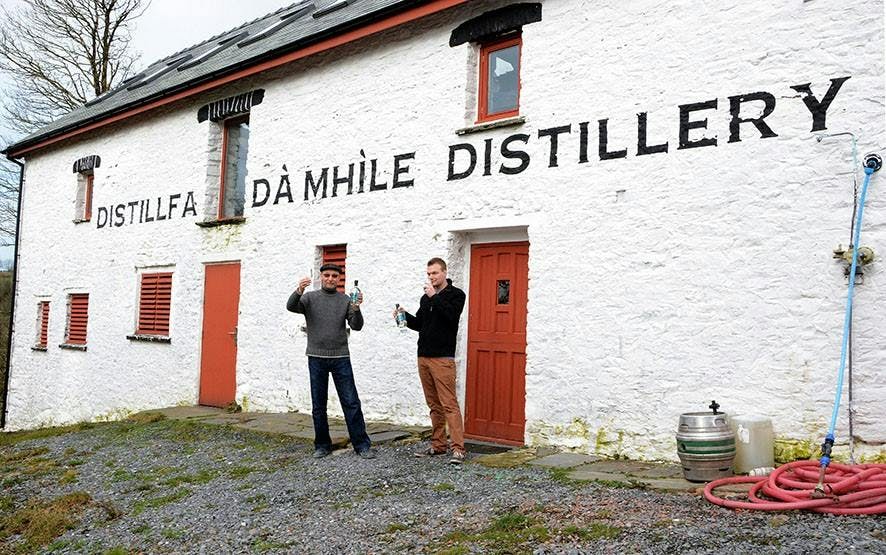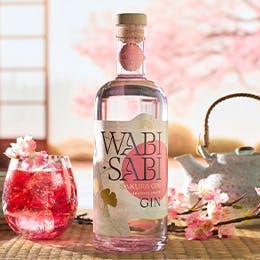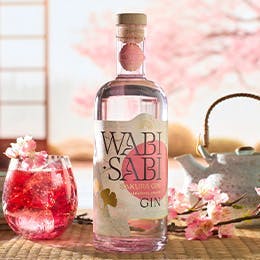Total flexibility, no commitment
A world of unique, crafted gins
Easy, free and reliable delivery

Dà Mhìle Distillery: Still of 2,000 Spirits
Below is an excerpt from the July 2015 edition of GINNED! Magazine about the Dà Mhìle Distillery. Every month, Craft Gin Club Members receive a bottle of amazing small-batch gins accompanied by GINNED! Magazine which is full of information about the gin, the distillery and loads of fascinating features.
Tucked away in the rolling green hills of Ceredigion County in Wales sits the Glynhynod Farm, a farm that has been producing the best cheeses in the UK for over thirty years. More recently, Glynhynod has diversified, moving into the production of craft gins, whiskies, and liqueurs, having installed a still on the premises, a still that is the centrepiece of what is now fondly known as the Dà Mhìle Distillery, a still of 2000 spirits.
“How can one farm possibly make 2,000 spirits?”, you might ask. Well, one probably can’t. But the still’s number comes not from all the potential combinations of spirits, herbs and spices, barrel and bottle, but from the name of the distillery itself. For dà mhìle, you see, is the Gaelic term for two-thousand.
STILL RINGING IN THE MILLENIUM
Dà Mhìle Distillery’s owner, John Savage-Onstwedder, began down the path towards making spirits on his successful dairy farm over twenty years ago. In the late 1980s, he set to thinking about the approaching change of the millennium, a significant event seeing as it only occurs once every thousand years. He sought to welcome the occasion with something unique, something no one else was doing that would not only be remembered but that would be coveted once released.
As an active supporter of the organic movement, John watched as what began with every day items such as organic cereals, breads, creams, and the like moved up market towards luxury items such as wines, beers and chocolates. Thinking about what could complement these aspirational items, he realised that an organic whisky had yet to be produced - and the seed of the cheese producer’s first spirit was planted.
To make the whisky, John worked with the world-renowned Springbank Distillery in Cambletown on Scotland’s Kintyre Peninsula, itself a family-owned business for five generations that makes the “most handmade (whisky) in Scotland”. Springbank started its “traditional production methods” in 1992 for John’s whisky with 11 tonnes of organic barley that he had shipped to the distillery for malting and distillation. What started as bale upon bale of grain resulted in enough spirit for 15 hogshead barrels (about 250 litres per barrel), that contributed their aged wood to the whisky’s maturation which transformed it over seven years and seven months into Dà Mhìle Single Malt Scotch Whisky, a product that first buyers enjoyed as 1999 turned into the year 2000 exactly how John meant his Dà Mhìle to be enjoyed.
Today, a few casks remain and the whisky is a collectors item selling for around £200 per bottle, one of which - bottle number 1,000 - was given by John to Prince Charles.
After a successful first foray into organic whisky with Springbank, John built on the experience by working with the Loch Lomond Distillery in the year 2000 to malt and distill their first single-grain organic whisky. Today, the spirit is sold out but whisky aficionado Jim Murray gave it 90 of 100 possible points calling it “Brilliant” and citing it for its similarities to a bourbon for its vanilla tones.
With these experiences under his belt, John thought that maybe there was the possibility to do more. A subscriber to Whisky Magazine, he read about the thousands of micro-distilleries in places like Austria - “basically, every farm has a still on its premises,” he told the Craft Gin Club - so he figured it was time to do something similar in the UK. In 2010, not long after the entrepreneurs at Sipsmith Independent Spirits set up the first copper still in London in over 200 years, John petitioned HMRC for a license to install a still on his farm.
Traditionally, HMRC only allowed permits for stills sized a minimum of 1,500 litres, beyond too large for a farm such as Glynhynod as well as for its farmer’s spirits ambitions. Surprisingly, it only took a couple of months for HMRC to come back to John with a license for a 350-litre still.
Like many other craft distillers setting up shop in the UK, John turned to Germany to find the right type of still, specifically to the Kothe Destillationstechnik, a family-run firm “specialising in copper and steel processing” with a subsidiary in the US that supplies the booming American craft distillery movement. Kothe makes versatile stills that can be used for making whisky, vodka, liqueurs, eaux de vie, and of course, gin. John James spent some time in Germany training with Dr. Klaus Hagmann, a PhD in distillation techniques who also helped design Dà Mhìle’s custom-made copper reflux still, a still whose name will be decided this July by the Craft Gin Club’s community of gin lovers.
With the still decided, the rest of the paperwork for things such as a warehouse and distribution licenses took another year-and-a-half but by late 2011, they were legally ready to begin experimentation.
WILDE-LY IMAGINATIVE
When talking of the Dà Mhìle Distillery’s first product, John likes to quote Oscar Wilde - a man known for his witticisms if not as much for his love of champagne - who once quipped “Consistency is the last refuge of the unimaginative”. But whereas the masters in Champagne strive for as much consistency in their product as the harvests will allow, John and John James decided they needed no refuge and instead found the inspiration for their first spirt in the dual weapons of artists like Wilde: imagination and inconsistency.
The father & son team came upon an old family recipe from Holland for an orange liqueur designed for production in a kitchen. John James took that recipe, toyed around with it and scaled it up for the the 350-litre still. They began with whole organic Seville oranges, first fermenting them in to an orange wine before distilling the wine, diluting the resulting spirit with water from the farm’s source and letting it sit in oak casks for three months with more oranges and coffee beans netted and floating in the aging spirit. After the three months, the spirit was diluted once again to bring it down to liqueur strength, then double-filtered and bottled at the farm.
The first test batch of what was to become Dà Mhìle Orange 33 came out of the still just in time in early 2012 to enter for the Welsh True Taste Awards; John and John James thought “Why not enter?” At first, there were several skeptics in the area who wondered how you could make a quality liqueur in Wales from a fruit that is certainly not Welsh. John simply responded by pointing out that the best chocolates in the world come from Belgium and Switzerland, two countries that certainly do not grow cocoa. They quickly proved the skeptics wrong by winning a bronze medal at the Awards - and that was just a test batch!
Since that first award, they have won more awards including a Great Taste Award, and have produced four subsequent batches of the spirit. Because the season for organic Seville oranges did not always coincide with the production time, John and John James have used a different type of orange for every batch resulting in different tastes and an inconsistency that is not only imaginative but delicious.
With the success of Orange 33, John James turned his sights to repeating the success of the world’s first organic whisky of the modern era. He barreled the distillery’s first single grain spirit in early 2013, a spirit that will be removed from the barrel as whisky in the summer of 2016 at 3.5 years, the youngest whisky that the distillery will put to market. John James is planning an array of single grains from organic maize, rye and wheat which will be aged in ex-bourbon barrels. His first single malt - which will start with organic barley and age in sherry, port and madeira casks - will be ready in 2018 as a four year-old whisky, an age that he would like to ultimately push up to 12 years with first bottling occurring in 2025. With only a few barrels of whisky produced to date, the plan is to produce between 10 and 15 in 2015 and to increase that number every year, all whilst maintaining the distillery’s gin production as well as experimenting with new products. In the pipeline are a Calvados-style apple brandy, an absinthe and a vodka that’s “totally different.”
All of these spirits might not quite get the distillery to 2,000 varieties, but they’re all in the spirit of John’s original imaginative idea. As time moves on, the organic whisky ages, and the gins surprise with every batch, raise a glass to the Dà Mhìle Distillery whilst thinking that, one day, far off in the future, the gin you are drinking this month will be a descendant of those enjoyed at a celebration of the next millennia produced imaginatively by the Trí Mhìle Distillery.







